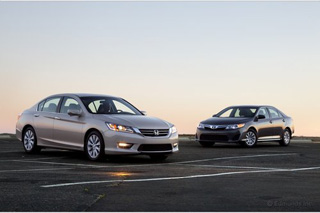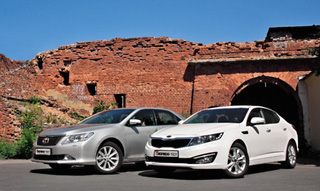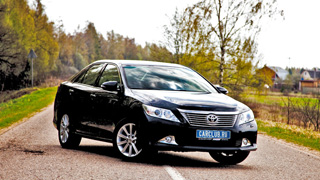Toyota Camry test drive since 2011 sedan
Breakwater
We test the new generation of the Russian bestseller - Toyota CamryThe storm that fell upon the test on the azure coast drove all the yachts in the harbor of Monte Carlo, Nice and Saint-Trope, where they, crowding and pushing, were saved from the elements behind powerful wave-cuts. Nobody went into the sea, they also tried not to leave the roads. And we quietly sailed along the coast on the new Toyota Camry.
It is good when the company has a completely win -win model, a powerful wave tank, which does not save during the financial storm, will stand up. The Russian office Toyota has such a wave -strip, of course, this is Camry. Yes, there are Corolla and Rav4, which are sold even a little better than Camry, but it is Camry that, perhaps, personifies our market.
A large sedan, spacious, comfortable, now with a new humane engine of 2.5 liters (it has become more powerful than its predecessor 2.4 by 11 horsepower), with a machine gun and on a modest 16-inch wheels. And of course, its price. In the previous generation, all this was given in less than a million, which was psychologically important. Today, with the advent of the new Camry, the price for a million fell out, but just a little: the most affordable sedan now costs 1 million 028 thousand rubles.
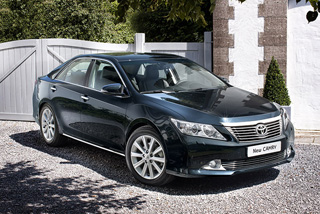
Continuity is unconditional. Absolutely everyone understands that this is Camry of the new, seventh generation. General proportions have almost not changed, the body of the body too. What is not surprising, because the former remained the platform and the wheelbase.
The change of generations in Russia passed quickly. The production of the new Camry has already been established under Peter. Sales plan for the next year 30 thousand cars. Non -well, but quite real: this year Toyota hopes to sell much more than 20 thousand cars of both generations. The dealers have a new sedan since November 11. And impressive lines have already formed for about six months.
The lack of cars will be tried to compensate for deliveries from Japanese factories, but, as experience shows, this does not help very much. It is good at least that the greedy America, which bought 50 percent of all the Camry of the past generation, is also a new Camry, will not steal part of the market with us: they have a slightly different car, with its design, and it is produced at factories in the United States. But everyone wants Camry. Most have not even traveled. We are sure to see. So what is the phenomenon of the wave cutter?
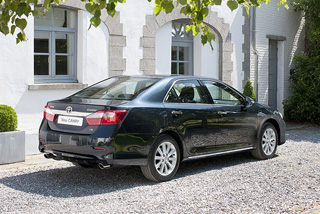
In profile, the novelty is very similar to the predecessor. But in front and behind the difference is most noticeable: the face is completely different, more strict and solid, and the rear lights fit into the trunk cover very successfully. There was more chromium, but the wheels are still not serious for this diameter class -16 or 17 inches.
The new Camry almost retained the dimensions of the predecessor. Only the length increased by 10 millimeters, the height remained the same, and the width, on the contrary, decreased by 5 millimeters. The base has not changed the same 2775 millimeters. The seventh-generation sedan uses the platform of the previous car, but with improvements: the body rigidity remains the same, but Camry is now better confrontation due to a new designed deformation zones.
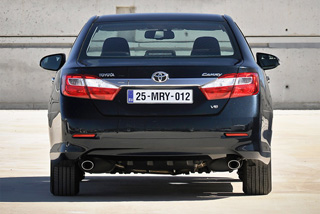
The most obvious difference between the top version 3.5 and a more modest 2.5 is the presence of two muffler nozzles behind. In addition, the 3.5 -liter Toyota Camry is already equipped with 17 -inch wheels.
Surprisingly, perhaps in any sedan I did not want to sit back so much. Neither the unique scope of Skoda Superb, nor the silence and peace of the S-class attracted me as the rear sofa did Camry. No, I do not campaign for Camry, like for a car with a driver. Most of its owners themselves drive. And there is nothing special in the back row! It is spacious, of course, even if you put your leg on your leg, but otherwise it is so -so: inexpensive skin, a fake under the tree, a mediocre plastic on the doors and the armrest.
But you sit back, close the door, fill up the back of the seat, almost stretch your legs and, for some reason, it becomes homely and comfortable for you. And a storm raging outside, throwing water in the windows with buckets and a foam of the surf, becomes completely invisible. Heat and dry. And quietly. And the climate control is now three-zone, there is heated seats, noise insulation has become even better. Sleep my joy
Interior
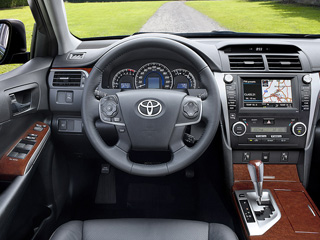
The quality of materials in the Camry salon, of course, is not premium, but quite worthy. And the assembly is good. The optimal panel of the devices, a three -zone climate, navigation on a 7 -inch screen (on expensive versions), leather chairs, a non -clumshole system is quite a worthy set. But the plastic under the tree looks very unsolvable.
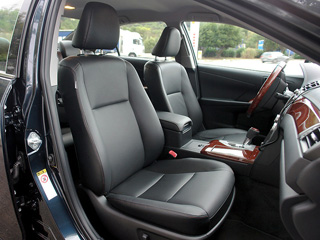
Toyota Camry front seats to American traditions and market. Soft, scalp, without pronounced side support of the chair are created just to sit. They do not perform any functions of keeping the body in corners. It implies a complete lack of traction for active driving.
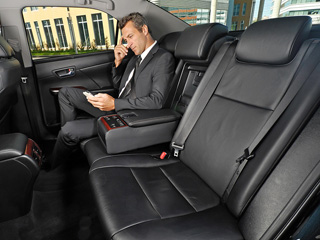
There is a lot of space behind Camry. Sitting behind myself with a height of 183 centimeters, I calmly could throw my foot on my foot. The backs of the rear seats now have an electrical control over the angle of inclination, and in the armrest (in expensive versions) - climate control buttons, curtains on windows, heating and audio systems.
You can not sleep. There are options. You can, for example, read a newspaper or get a laptop. Camry encourages, in principle, any occupation of the rear passenger: the move is very smooth. And although in the new generation the suspension nevertheless became a little harder to change the silent blocks and the settings of shock absorbers still Camry surprisingly smoothes irregularities. However, it would be surprising to take away from the car a feature that customers value so much.

Camry is naturally comfortable. It is alien to this car about gambling, and the steering in general, it seems, exists separately from the car, but it is unlikely that anyone else in this class can move passengers on roads of varying degrees.
A little later, when I was already crossing the wheel, another Camry was not so fired in turning. For such a large car and with such a smoothness, a good result. It’s good and the mutual understanding of the four -cylinder engine with a new six -speed automatic (there were five steps before). Correct response to gas, and the delay in the brains of automatic transmission is not large. The dynamics is worthy for the four, and the fuel consumption for a large sedan about 9 liters cannot but rejoice.
Everything would be nothing, but everything spoils the steering. I don’t know whether potential owners wanted it or not, but many journalists expected that with the arrival of the electric power, Camry would have more information on the steering wheel and its sensitivity will improve. The revolutions really became less than 3.1 versus 3.8. But there was no information, and no. No. On the highway there is constant steering, in virabs, the search for the trajectory and involuntary annoying. There is no complete control over the car, and this is doubly regrettable: with a normal wheel it would be a well -controlled car, which is partly a top version with a volume of 3.5 liters.

The steering and pendants are configured in their own way for each engine. But the difference is small. Camry 2.5 has a slightly more collected suspension, but the steering does not withstand criticism: there is no feedback in principle. Camry 3.5 is slightly softer, but the steering wheel is more sensitive. A little bit.
For a heavier engine, Toyota uses other suspension and steering settings. And if on the suspension of positive emotions here it seems even softer, there was a buildup, and the blows of unsaved masses are felt stronger then at the helm of the helm suddenly appeared and some feedback in corners. I admit that this is quite enough for such a comfortable sedan. But why it was not to transfer these settings to the most common (in the future) option with a 4 -cylinder engine 2.5 is not clear.
We even complained to the chief engineer of Yukiro Okan. As they complained about the fact that it would be logical with the advent of an electric amplifier to equip Camry with new -fangled systems, such as Park Assist or Lane Assist.

A six -speed automatic machine is much better combined with a 2.5 -liter engine. With a powerful motor, the automatic transmission slows down, the traction control is not so convenient, but it helps out a powerful power unit.
In response, we heard a categorical no: they say, this is all a great price of the car. In general, the Japanese are probably right. On the one hand, maybe it was worth offering all these bells and whistles (which, we have no doubt, Toyota can do) as options, but on the other, how many potential customers are ready to overpay for high-tech a third of the cost of the machine? Then Camry will no longer have such a good price and it will lose one of the main competitive advantages.

AFS adaptive lighting systems are available for CAMRY in premium trim levels and prestige plus. She turns the light bundle of the headlight of the headlights in advance in the direction of turning.
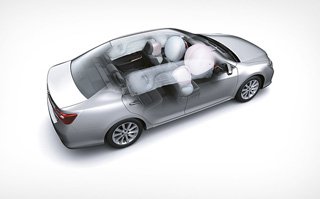
In the standard modification, Toyota Camry has seven airbags: front for a driver and a passenger, a knee for a driver, front side and curtains. In expensive trim levels of pillows, nine are also added the rear side.

The volume of the Camry luggage compartment is impressive 506 liters. Therefore, it is difficult to reach the outside back of the rear sofa. Under the floor, a gift for Russians: a full -size reserve.
But back to the metal. Let the 178 -horsepower engine 2.5 not weak at all, but V6 surprises with its dynamics. Powerful, even, atmospheric acceleration in growing. Why are there no turbo engines? Camry is all right, the Japanese answer. And arguing is stupid: the motors are really good. A familiar V6 sounds great, and the sedan takes forward very briskly, despite the monstrously long gears (the first up to 70 kilometers per hour) and hesitation during switching, which the automatic machine almost did not allow itself to be on version 2.5. Eh, connect this motor and steering with a suspension and settings of a machine from a car with a four -cylinder engine, would be ideal.
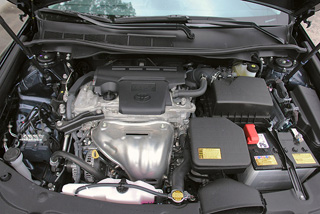
The V6 3.5 engine went to the new Camry from the predecessor almost unchanged. The main ecological class Euro V. But the four is a new motor, although it complies with environmental standards only Euro IV. The engine is equipped with a mechanism for adjusting the VVT-I gas distribution phases and the input collector length system. The compression degree is higher, compared to the previous four, 2.4 reduced friction losses, a 3-speed oil pump is installed, smaller viscosity oil is used. But to change it, as before, Toyota prescribes every 10,000 kilometers. So far, Camry is the only model with this engine in the Toyota line. Subsequently, a new motor may be installed on those models that now go to 2.4 (Avensis, Rav4).
In any case, at the moment, Camry deservedly takes its first place in the classroom. Because sedan, comfort, size, smoothness, good motor and transmission, the ability to use as an official car with a driver plus a good equipment for sane money is all that is appreciated in Russia. And the share of 15 percent in his segment speaks of this very eloquently.
So Toyota is absolutely sure of her waveresis. And this confidence will surely confirm a large number of new Camry on our roads in the near future.
Alternative
Nissan Teana front -wheel drive, like Camry, is sold with 2.5 (182 forces) and 3.5 (249 forces) liters. But both of them are V6. The basic price for Teana does not exceed a psychologically important mark of a million rubles 949 thousand for Elegance. The combination of the richest configuration of Premium Four with a 2.5 -liter engine will cost 1,236,000 rubles. Cars with an engine of 3.5 are sold only in the Premium modification (1,396,000 rubles). All Teana snaps around a stepless variator. At a price of 1,044,000 rubles, Teana with all -wheel drive and in -line four of 2.5 liters (also 182 forces) is also available.
Mondeo’s configurations cannot be counted: from a simple sedan on a handle and with a 1.6 -liter gasoline engine (120 forces) in the Ambiente configuration for 699 thousand rubles to a five -door Sportchback with a 2.2 -fraud turbodiesel (200 horsepower) and 6 -speeded turbodes automatically for 1,343,500 rubles. A little cheaper is the hatchback with an Ecoboost gasoline turbo engine (240 forces) and the PowerShift robot (1,307,000 rubles). In the interval, a huge number of modifications with all three types of body (sedan, hatchback, station wagon) with gasoline 2.0 (145 forces) and 2.3 (161 force) with engines and turbodiesel 2.0 (140 forces).
The Hyundai Sonata is equipped with only 4-cylinder engines of 2.0 (150 forces) and 2.4 liters (178 forces). As a transmission, a 5 -speed mechanics or automatic transmission with six gears are proposed to choose from. Prices start from 929 thousand rubles for a version with a two -liter engine in Comfort. With the same engine, but in the most expensive modification Prestige+Navi sonata will cost 1,209,000 rubles. The minimum equipment for a machine with a 2.4 style engine is estimated at 1,188,900 rubles. The most expensive Sonata 2.4 6at Prestige+Navi for 1,293,900 rubles.
Dmitry Krotov photos of Toyota
Source: Motor magazine [November 2011]

.jpg)
.jpg)
.jpg)
.jpg)





